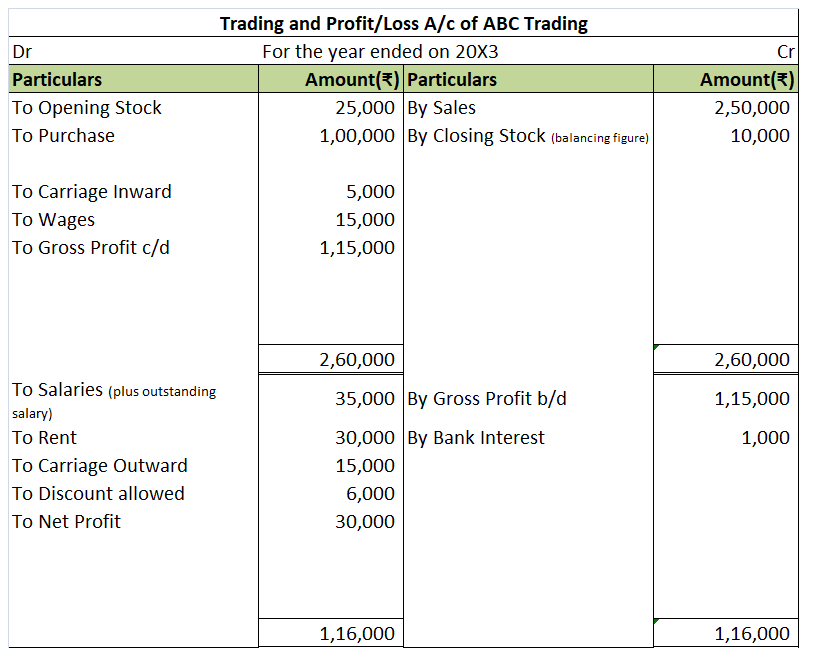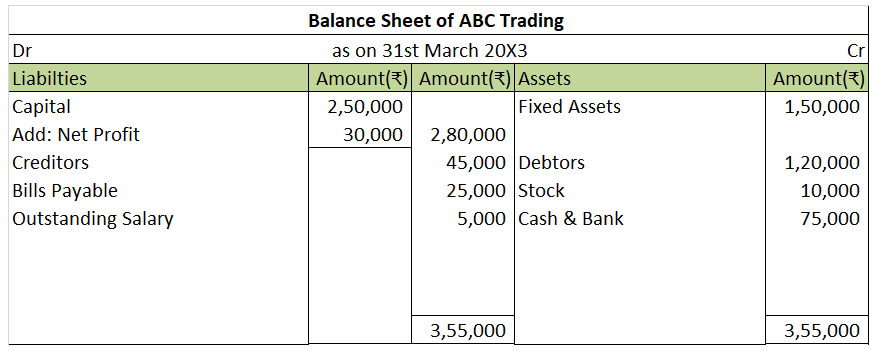(a) Potential investors (b) The owners or managers of the concern (c) Creditors and Lenders (d) Government
Prepaid expenses are those expenses that have not been expired yet but their payment has already made in advance. There are many examples of prepaid expenses such as rent paid in advance, interest paid in advance, unexpired insurance You might be wondering what kind of account it is? As the name sugRead more
Prepaid expenses are those expenses that have not been expired yet but their payment has already made in advance. There are many examples of prepaid expenses such as rent paid in advance, interest paid in advance, unexpired insurance
You might be wondering what kind of account it is? As the name suggests it should be an expense but actually it’s an asset. When we initially record prepaid expenses we consider them as current assets and show them in the balance sheet. It turns out to be an expense when we use the service/item for what we have paid for in advance.
The entry for the above explanation is as follows:
From the modern rule, we know Assets and expenses increased are debits while decrease in assets and expenses are credit.
As this is asset, increase in asset therefore we debit prepaid expense and on the other hand we pay cash/ bank on behalf of that asset in advance hence there is decrease in assets hence credited. The entry will be as follows:
| Prepaid Expense A/c …….Dr | XXX | |
| To Cash/ Bank | XXX |
when this prepaid expense actually becomes expense we pass the adjusting entry. The entry will be as follows:
| Expense A/c …….Dr | XXX | |
| To Prepaid expense | XXX |
Let me give you simple example of the above entry.
Suppose you pay advance rent of Rs 9,000 for six months for the space you haven’t used yet. So you need to record this as prepaid expense and show it on the asset side of the balance sheet under current assets. Since you paid for the same the entry would be as follows:
| Prepaid Rent A/c …….Dr | 9,000 | |
| To Cash/ Bank | 9,000 |
As each month passes we will adjust the rent with prepaid rent account. Since the rent was advanced for 6 months, therefore (9,000/6) Rs 1500 will be adjusted each month with the rent expense account. The adjustment entry will be:
| Rent A/c …….Dr | 1,500 | |
| To Prepaid rent | 1,500 |
The process is repeated until the rent is used and asset account becomes nil.
See less







The correct option is (b) and (d) As the internal analysis is done for the internal assessment of the firm, only those persons can carry out the assessment who has access to the internal accounting records of a business firm. As the owners or managers are the members of the top-level management execRead more
The correct option is (b) and (d)
As the internal analysis is done for the internal assessment of the firm, only those persons can carry out the assessment who has access to the internal accounting records of a business firm. As the owners or managers are the members of the top-level management executives they can carry out the work of internal analysis. Also, the government agencies can carry out internal analysis as they have been given the statutory powers of doing such works.
To make it clear, let me explain a little about internal analysis-
To determine the profitability of various activities and operations or to know the performance of the business concern, the top-level executives along with the management accountant carry out an internal assessment of the financial statements within the concern, this process is known as internal analysis.
See less